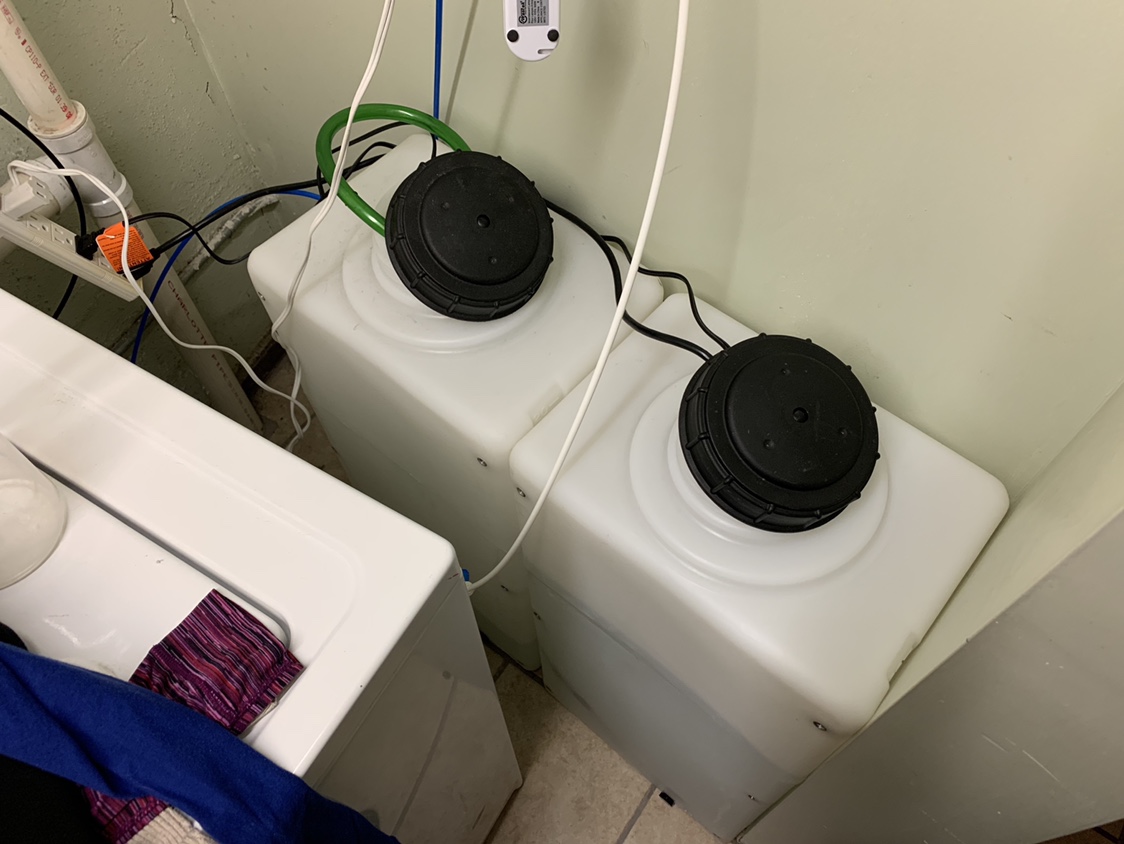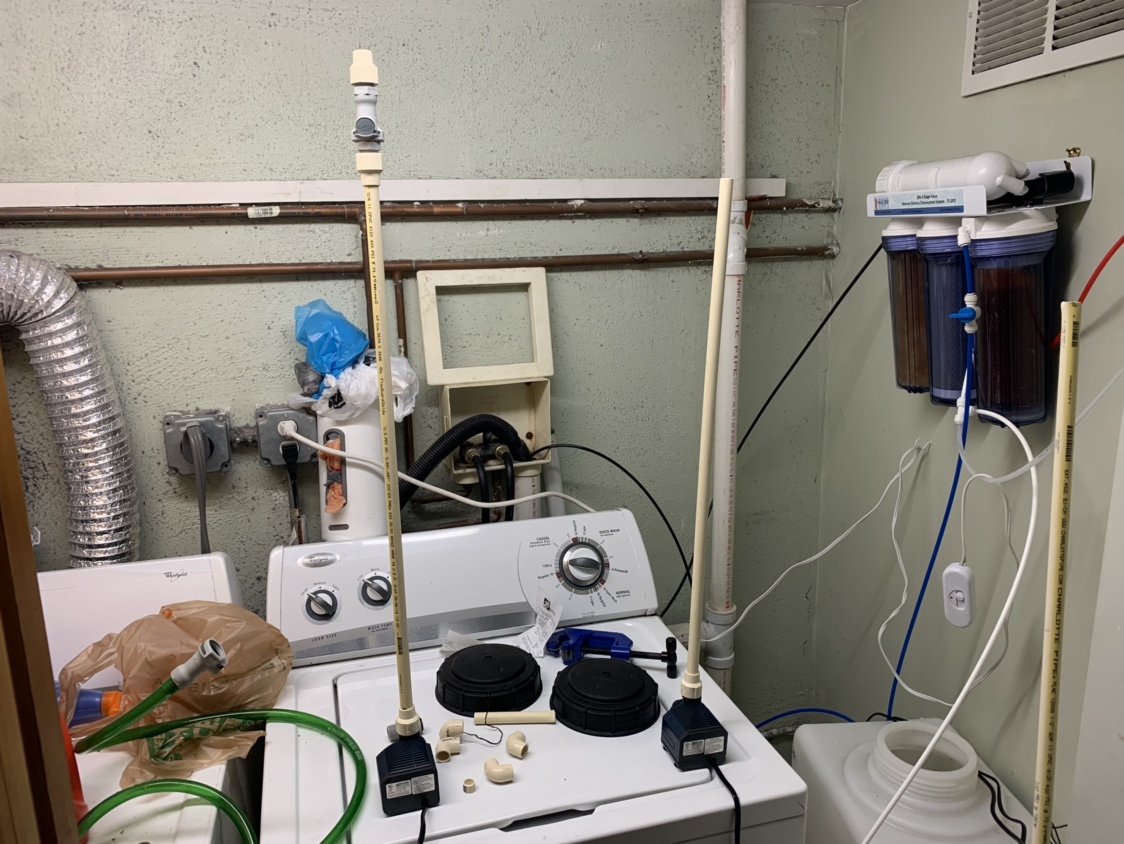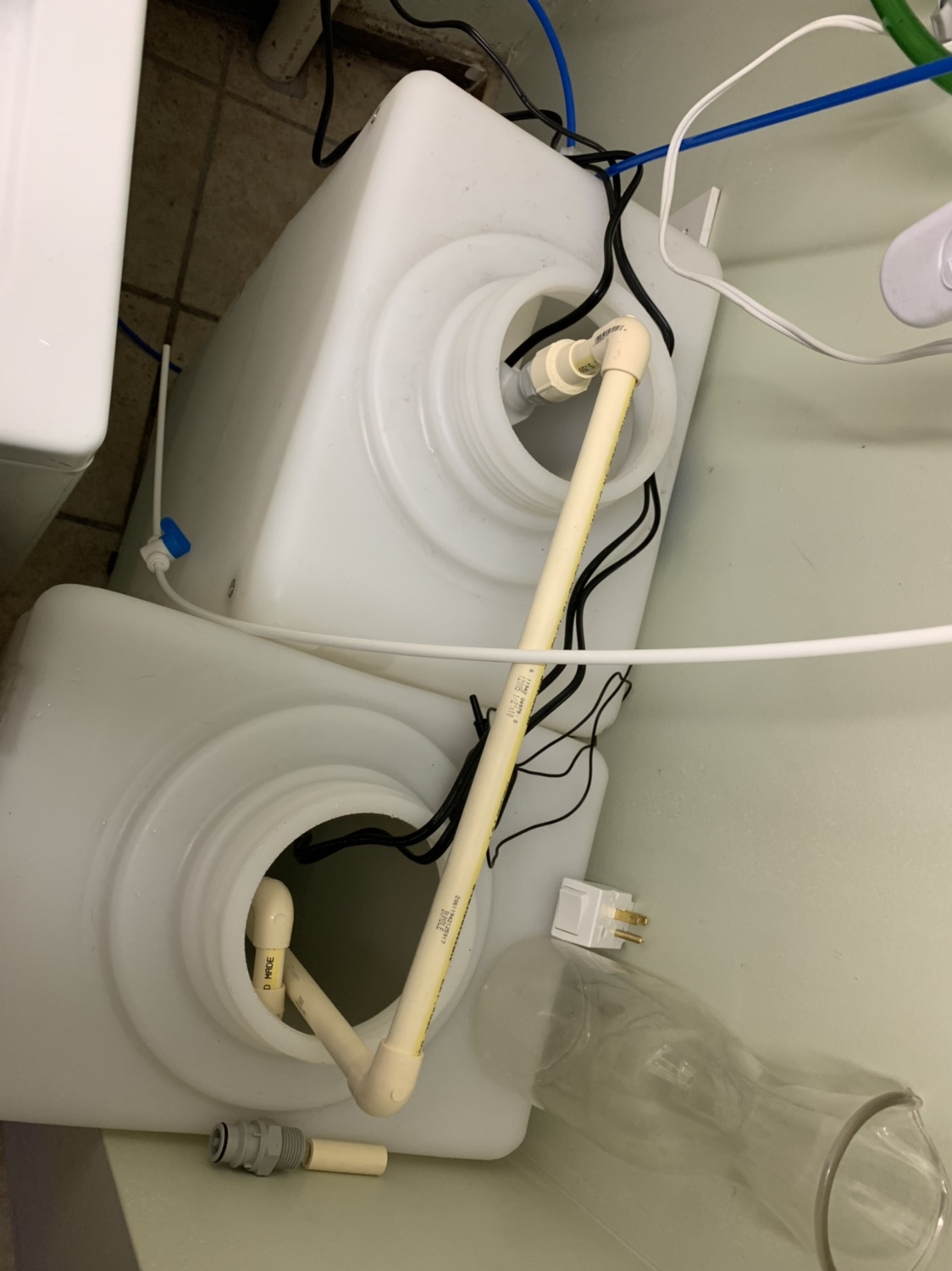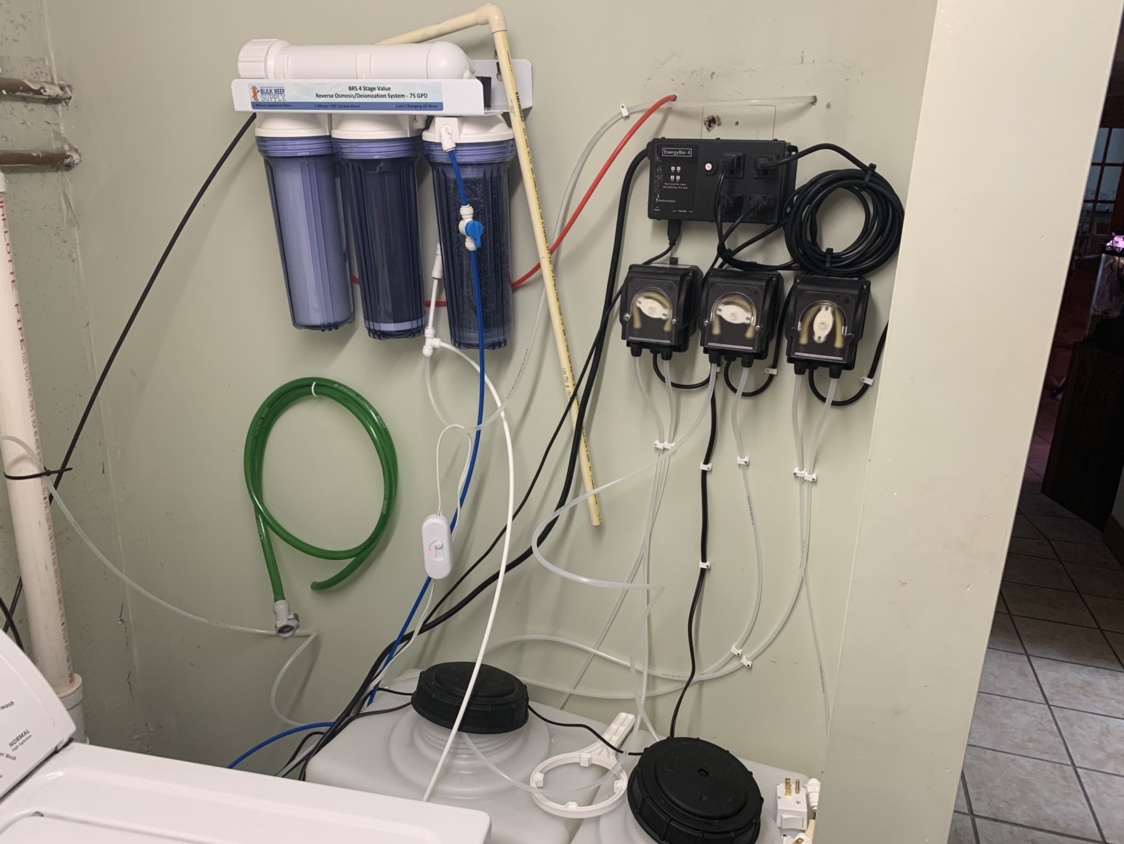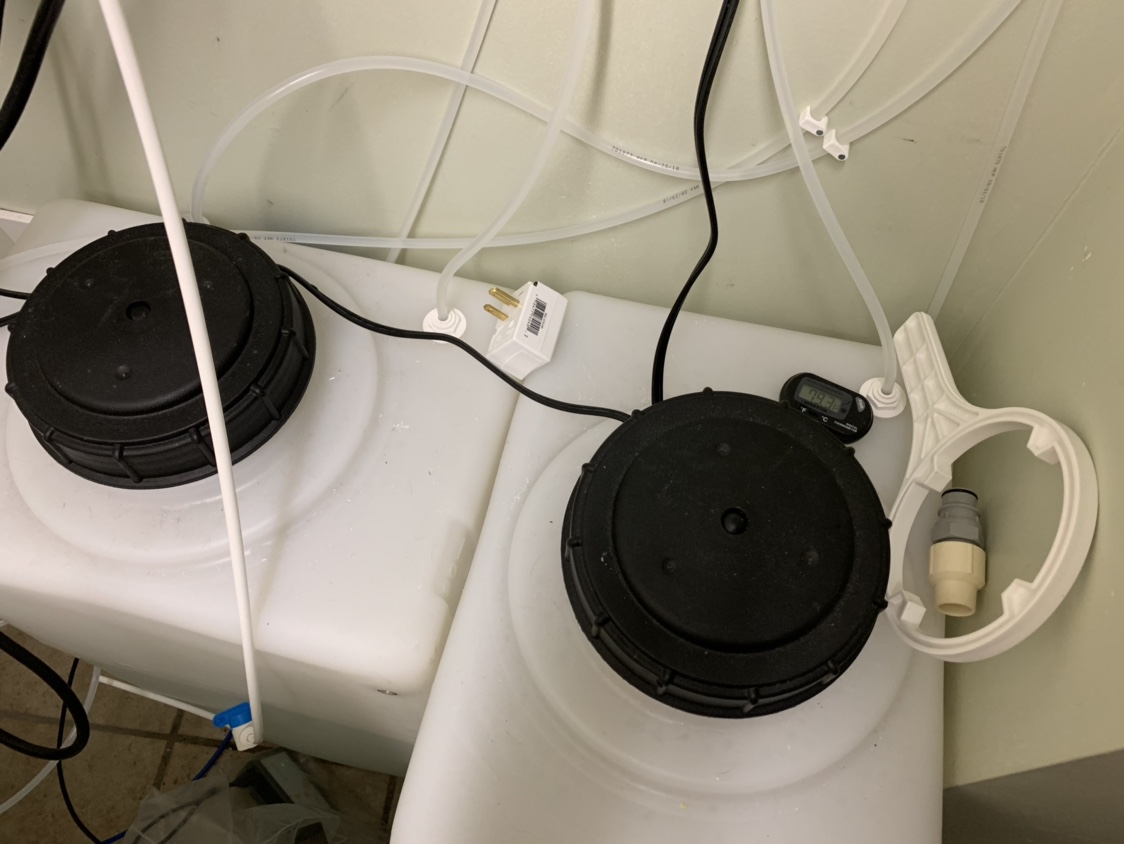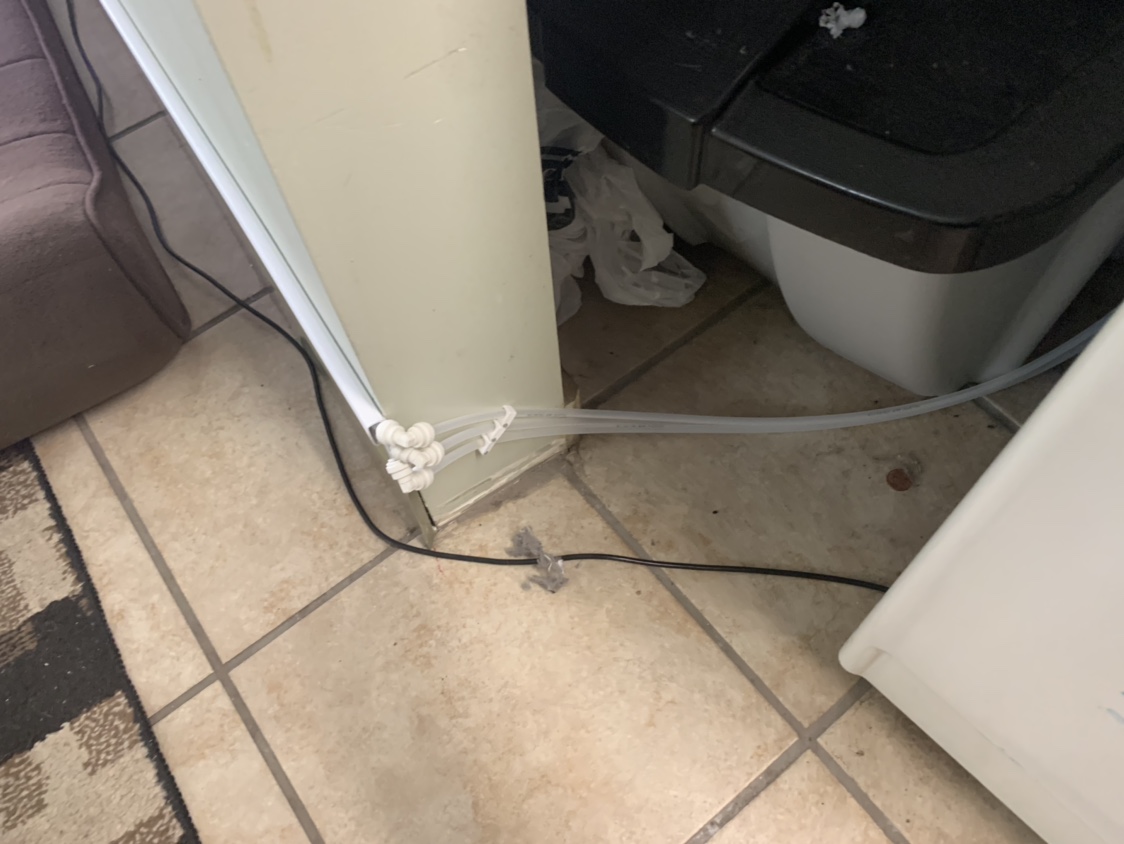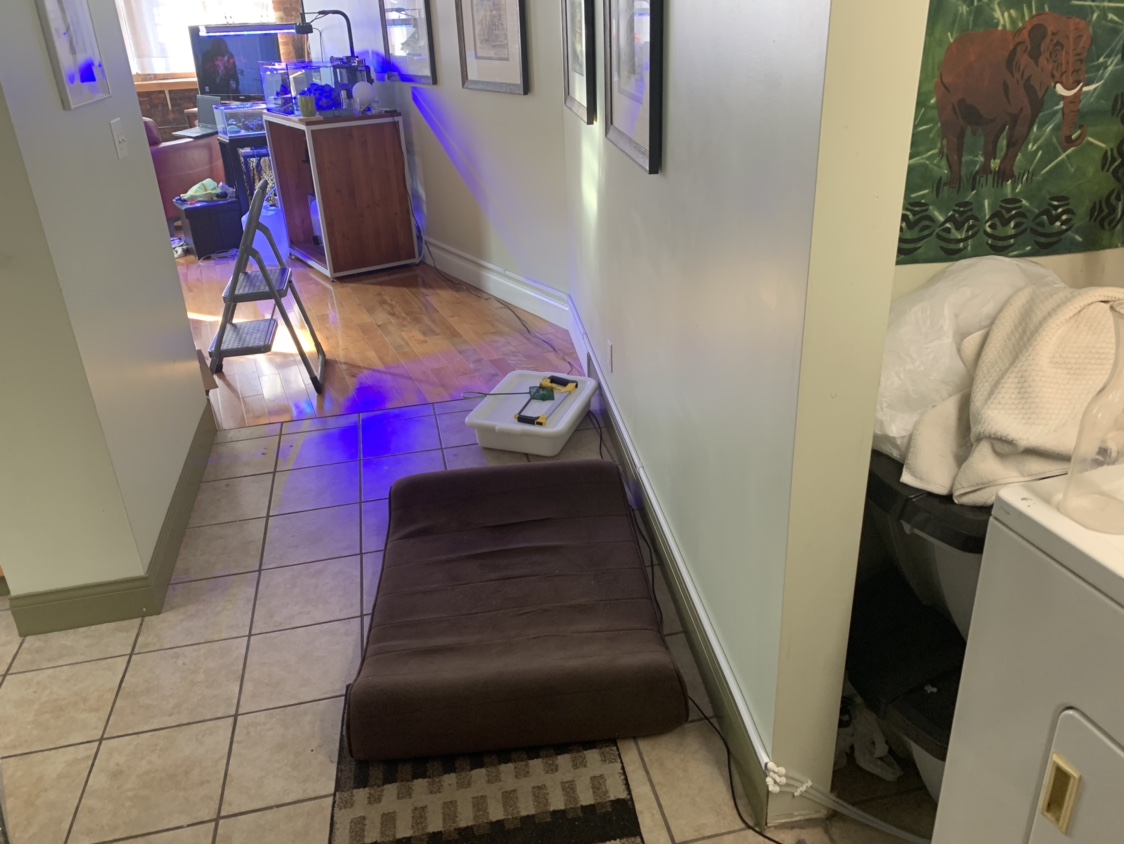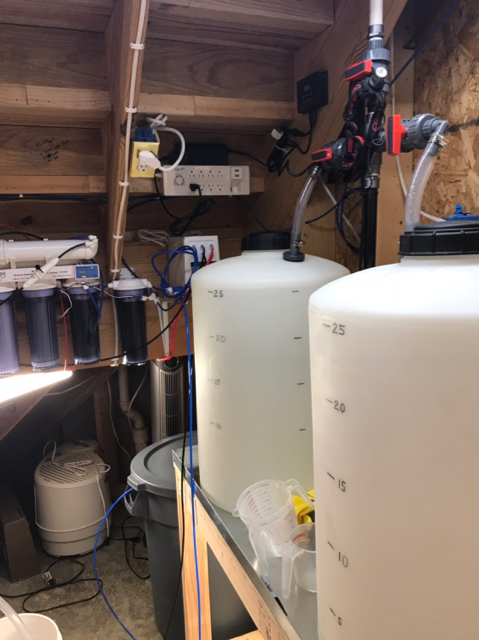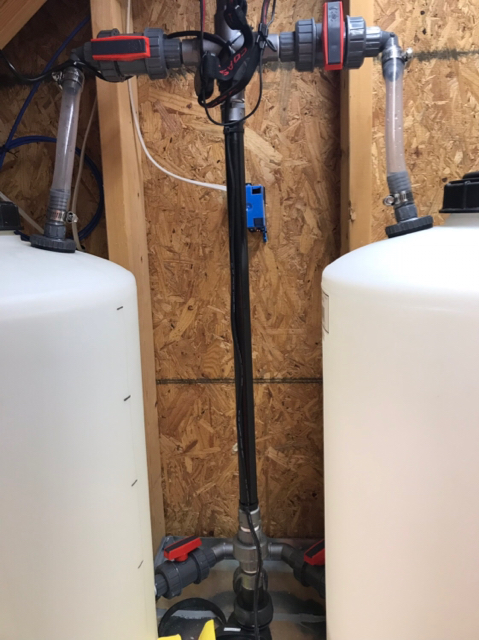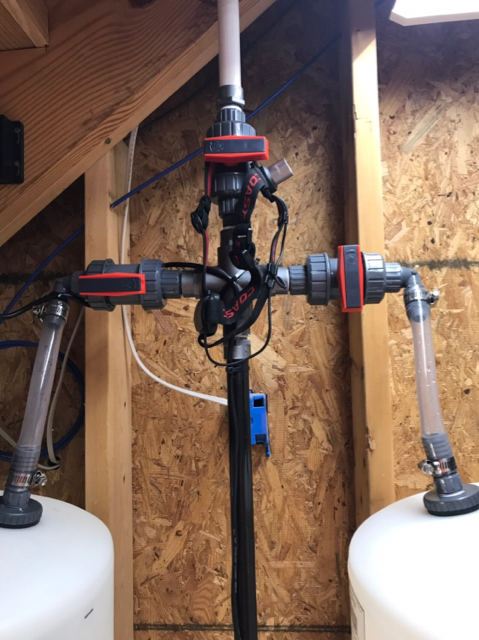dbl
It Takes Less Energy to be Nice
View Badges
Excellence Award
Reef Tank 365
Article Contributor
Moderator Emeritus
Reef Squad Emeritus
Hospitality Award
My Tank Thread
...I am wondering if I just have a small pump circulating water in there at all times if it will keep it from getting nasty...
Oddly I found the opposite to be the case. I used to run a powerhead for several minutes a couple times a day after setting this system up. In a little over a year, the container was looking very nasty. So I cleaned it out and did a little homework.
In my case, using Red Sea CP salt at the time, I discovered keeping it aerated was the likely cause of the build up. So I stopped running it except for right before use, the continued has stayed clean and clear. I can't say this is the case for all salt brands, but it was for RSCP.
And yes, the clear roto-mold type containers are a pain to clean. A lot of vinegar and a homemade long-handled, very course brush. Not a fun afternoon for sure.









